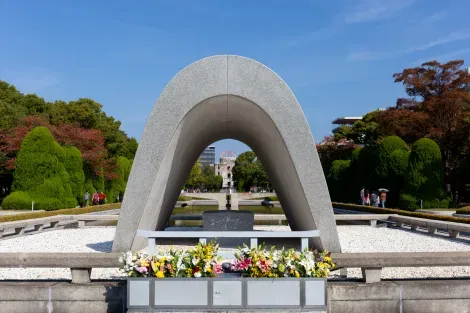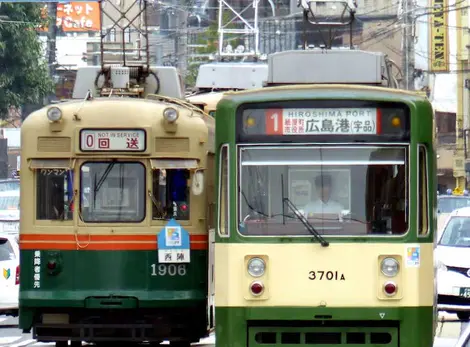Osaka-style vs Hiroshima-style Okonomiyaki: the battle of the batter explained!
- Published on : 16/12/2024
- by : Joshua
- Youtube
Okonomiyaki is a unique dish amongst Japan's culinary roster, and two of the country's most famous cities boast a unique type of okonomiyaki that has ignited a bit of a (friendly) rivalry. Learn the differences between Osaka-style and Hiroshima-style okonomiyaki for your next visit to both cities and try them for yourself!
Many Japanese foods are well-known and loved in the west, to the point where not much explanation is needed for most of them, even just by name. Sushi, tempura, ramen all conjure up distinct images to anyone, all throughout the world, but okonomiyaki is a popular Japaenese dish that may entail more explanation to those who have never had it. Many describe it as a “savory pancake,” but such doesn’t do much justice to the variety and indulgence that okonomiyaki can be, as well as only conjure up images of “breakfast food,” which, typically, okonomiyaki is not.
Okonomiyaki explained
The best way to start describing okonomiyaki may be through translation and etymology. “Okonomi” means “as you like” and “yaki” means grilled. At its core, okonomiyaki is a savory batter dish that is mixed with a variety of toppings and ingredients, cooked upon a flat Japanese grill called a “teppan,” and then finished with different sauces like a tangy and sweet worsteshire-based sauce and Japanese-style mayonnaise. The dish is highly customizable and varied (hence the “as you like” in the name), and is a widely satisfying dish with a lot of great textural variance.

Okonomiyaki preparation
@flickr/ Sergiy Galyonkin
While okonomiyaki is a beloved soul food throughout Japan, it is largely associated with two major cities, Osaka and Hiroshima, and it’s not simply because both places make it deliciously. Osaka-style okonomiyaki and Hiroshima-style okonomiyaki are structurally different dishes, and along with a different dining experience, this difference has spawned a sort of rivalry. Between the two, common ingredients include a wheat flour and egg-based batter, shredded cabbage, and often protein. Often times at okonomiyaki restaurants, diners are seated at tables with a large central flat grill where they are able to cook their okonomyaki themselves, fully living up to the “as you like” part of the dish.
The history of the dish and the Osaka-style versus Hiroshima-style argument is rich and exciting, but regardless, a visit to both cities and everywhere in between is well worth trying both to form your own opinion and, of course, to see some of the most culture-blessed destinations in all of Japan. Let’s take a look into the key differences between these two beloved delicacies for some insight on which may suit your tastes more!
Osaka-style Okonomiyaki
Batter-based foods and confectionaries in Japan have existed for sometime, but okonomiyaki itself is a relatively new addition to the Japanese cuisine roster. The name “okonomyaki” first popped up in the 1930s, and it was at a shop in Osaka that the first recorded use of this moniker was first introduced, so we’ll be going over Osaka-style okonomyaki first.
Osaka as a city is heavily associated with street food. Takoyaki, griddled balls of batter filled with octopus bits, and kushikatu, fried skewers of different kinds, are principal options, but okonomiyaki is also a major player in the city’s culinary scene.
For many, Osaka-style okonomyaki is what comes to mind first when discussing the dish, and it is largely defined by having all its ingredients thoroughly mixed and then thrown onto the grill. The batter takes the wheat flour and egg base but also often adds grated Japanese yam for extra fluffy texture. The mixture is thick on the grill, and as it cooks, the cakiness of the batter poaches the ingredients inside. Okonomiyaki is often served with a principal protein, typically pork, but seafood options like squid and and shellfish are also very common. Simmered beef tendon or offal meat are also added.
The sauces are slathered on top and Japanese mayonnaise is added with its creamy white coloration, nicely contrasting the deep, tangy sauce
At some shops, a design is made out of the two sauces. A favorite addition to the final product is thinly shaved katsuobushi, or dried bonito flakes, that move and dance when placed on top of the okonomiyaki due to the heat!
Osaka-style okonomiyaki is beloved for its thick, cakey, dense texture. Since the ingredients are nicely mixed, each bite is rich with flavor and different ingredients, making it a very hearty dish to eat!
Hiroshima-style Okonomyaki
The distinction between Hiroshima-style okonomiyaki from Osaka-style okonomyaki is immediately apparent from the visuals. The core elements are still there: cabbage, batter, protein, sauces, and such, but a few other additions and a difference in construction are apparent. Where Osaka-style okonomyaki has all of its ingredients mixed in and then cooked, Hiroshima-style okonomiyaki is defined by a more layered structure, where different parts of the dish are cooked separately and then stacked on top of each other.
The first of these layers to be prepared is the base batter. Second, a defining additional of Hiroshima-style okonomyaki is added: noodles! For many, the addition of soba noodles or udon noodles is the best part of the okonomiyaki found in Hiroshima, with great extra textures and additional carbohydrates to fill you up! Next, the toppings of protein and other ingredients are cooked and added, and finally, a fried egg is a common accouchement! Oysters, a famous locally-sourced delicacy in Hiroshima, may be a common topping choice as well when indulging in this style of okonomiyaki, plump, briney, and grilled to perfection!
Eating a Hiroshima-style okonomyaki is akin to a multi-layered cake, but with different savory textures, creating a one-of-a-kind dining experience!
Because there are more components that cook separately in Hiroshima-style okonomiyaki, it is more common to have a designated chef or staff cook the dish at restaurants; however, such is still often done in front of diners, meaning there is no lack of a show with your meal!
Hiroshima-style okonomiyaki was largely developed after World War II, when the city was facing major food shortages after the decimation of the city. With limited ingredients to work with, the citizens of Hiroshima needed to get the most out of what was available, and by combining a medley of foods that optimized satiation and nutrition, the iconic food became a staple of the city. Into the modern day, it is a dish that many inhabitants of the city take great pride in!
Battle of the batter!
So which of these two is the better iteration of the unique dish? It comes as no surprise that this answer depends on the person, and just like with any question with food, its subjective. However, ask the people of Osaka and Hiroshima, and you may see a bit of a bias in responses.
Overall, the distinct structure and addition of noodles to Hiroshima-style okonomiyaki may appeal to people who would like foods with noticeable layers and varied textures. Osaka-style okonomiyaki is unapologetically hearty and dense, the ultimate late-night food looking to have some solid draft beer with a satiating meal! The only objective aspects to this question are that both styles are delicious and both are representative of each city’s lauded culinary scene, and the only way to know which one you like most is to go to the source and try both!
Traveling between Osaka and Hiroshima!
A visit to both cities when coming to Japan is on the must-do list! For foodies, of course, the distinct cuisine of both Osaka and Hiroshima is unmissable, and not just for the okonomiyaki! Osaka’s aforementioned street food culture is a great way to spend the night, but the city is also home to all kinds of world-class establishments yet to be discovered. Hiroshima is the same, with some of its most beloved offerings being locally sourced oysters and anago sea eel!
Both cities are great for culture and history as well. In Osaka, the ancient Mozu Tombs are a symbol of the country’s long history that stands next to modern urban sprawl, and the iconic “Tower of the Sun” by Taro Okamoto is a pilgrimage for art enthusiasts. This art piece was originally constructed for the 1985 World’s Fair, and in the year 2025, the World’s Fair will return to Osaka, putting the city on the map once again for international travelers.
Hiroshima has a siginficiant history in Japan dating back literal centuries. The floating torii gate of Miyajima is a sight that must be seen to be believed, and the accompanying main shrine that stands out in the water is home to many national treasures. The city, being the site of the world’s first ever atomic attack, is host to a number of monuments in commemoration of the tragedy and has gone on to become a symbol of progress and peace into the modern day.
The two cities are directly connected via the Sanyo Shinkansen bullet train that goes all the way out to Kyushu from Kansai, with trains departing from and going to Shin-Osaka Station and Hiroshima Station. This is the most effective means of getting between the cities, and the route is often included with a number of different passes for travelers to Japan. The National Japan Rail Pass, of course, allows for this route; however, regional passes such as the Kansai Hiroshima Pass and Sanyo Sanin Pass include transit as well. Tickets between the two cities are also available for purchase!





































